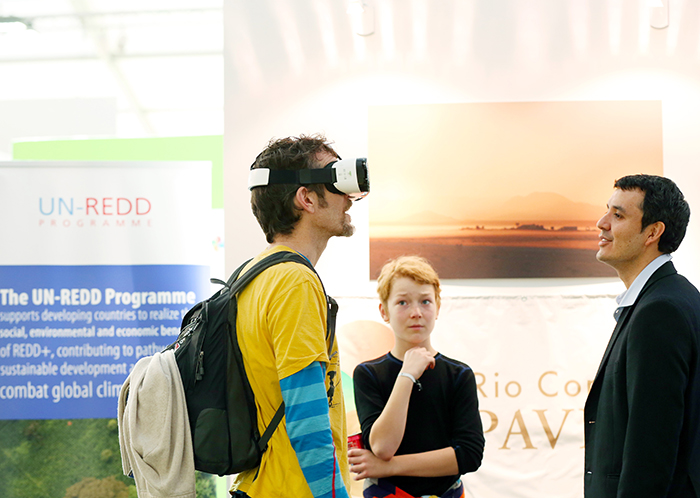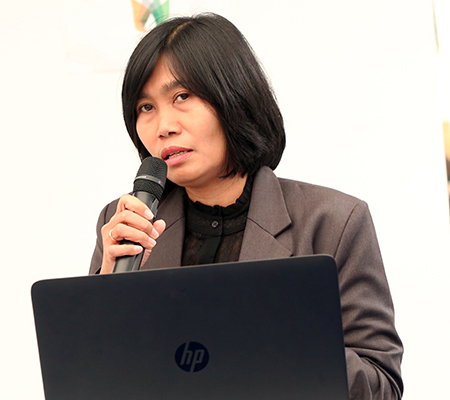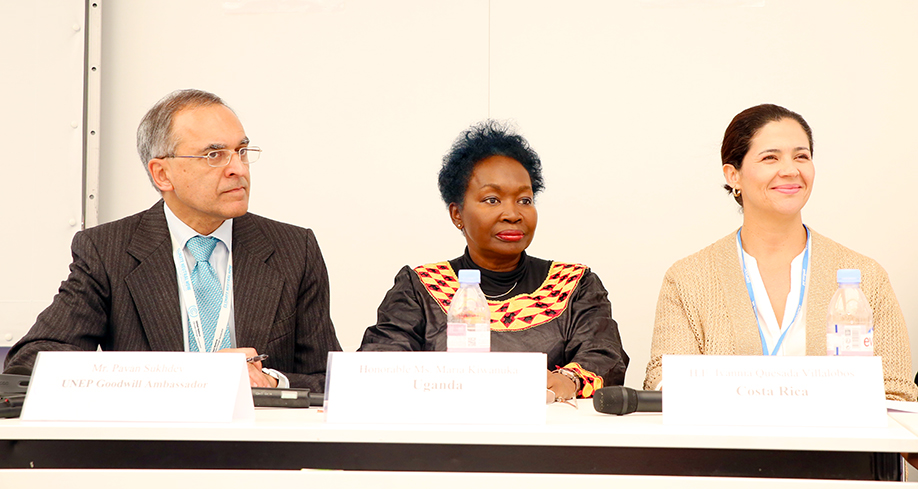|
 The RCP at UNFCCC COP21 convened on Monday, 7 December 2015, addressing issues regarding forest and landscape restoration in reducing emissions from deforestation and forest degradation in developing countries, and the role of conservation, sustainable management of forests, and enhancement of forest carbon stocks (REDD+). In the morning, two panel sessions were held, where participants discussed country approaches to safeguards and safeguard information systems (SIS). The RCP at UNFCCC COP21 convened on Monday, 7 December 2015, addressing issues regarding forest and landscape restoration in reducing emissions from deforestation and forest degradation in developing countries, and the role of conservation, sustainable management of forests, and enhancement of forest carbon stocks (REDD+). In the morning, two panel sessions were held, where participants discussed country approaches to safeguards and safeguard information systems (SIS).
In these sessions, countries and experts shared progress made in pursuing safeguards, and identified opportunities and persistent challenges in these efforts. They also discussed the development and implementation of SIS, including technical considerations and lessons learned from case study countries conducting this process.
In the afternoon, participants turned towards finance and policy issues, with three panel sessions on: the economic rationale of REDD+; where and how REDD+ can deliver the most benefits; and, innovations in private finance for REDD+.
Noting the importance of considering the economic dimensions of REDD+, participants heard from a panel discussion addressing how these can be underlying drivers to deforestation, and how to understand the economic value of forest ecosystems in the national economy. On how REDD+ can deliver maximum benefits, participants considered ways to assess the potential benefits from REDD+, with examples of cost-benefit analyses (CBA) and mapping exercises being highlighted. The day’s final session assessed the trends and developments in the private finance sector over recent years, and addressed the different mechanisms for obtaining private finance. The session also looked at the roles blended finance, institutional investors, and private financiers are currently playing in the land use space.
REDD+ Day was closed with a reception.
|
|
|
IISD Reporting Services, through its ENB+ Meeting Coverage, has provided daily web coverage, daily reports and a summary report from the Rio Conventions Pavilion (RCP). Our summary report is available in HTML or PDF format.
| |























 Saturnine Carine Milandou, Ministry of Forest Economy and the Environment, Republic of Congo
Saturnine Carine Milandou, Ministry of Forest Economy and the Environment, Republic of Congo







